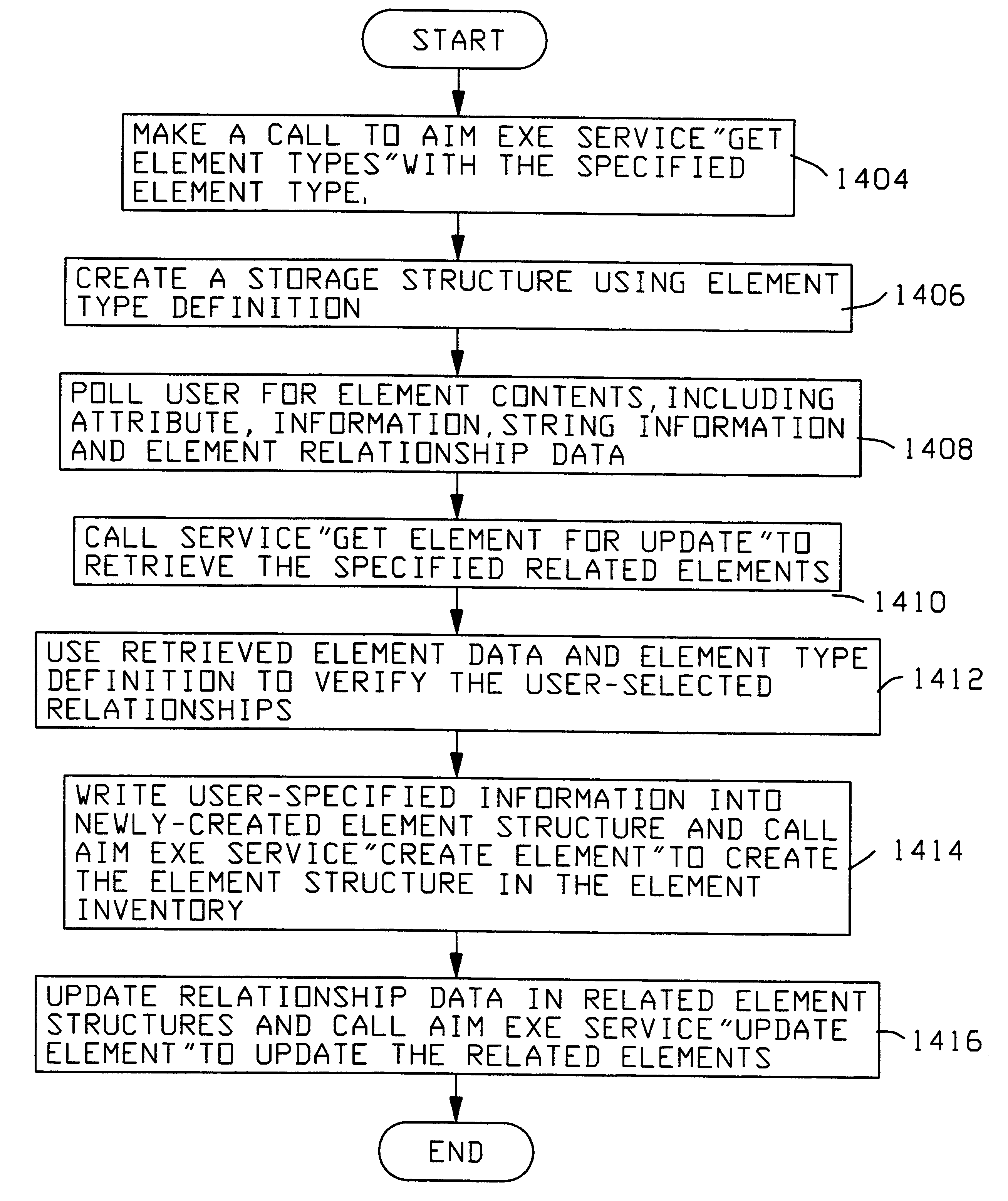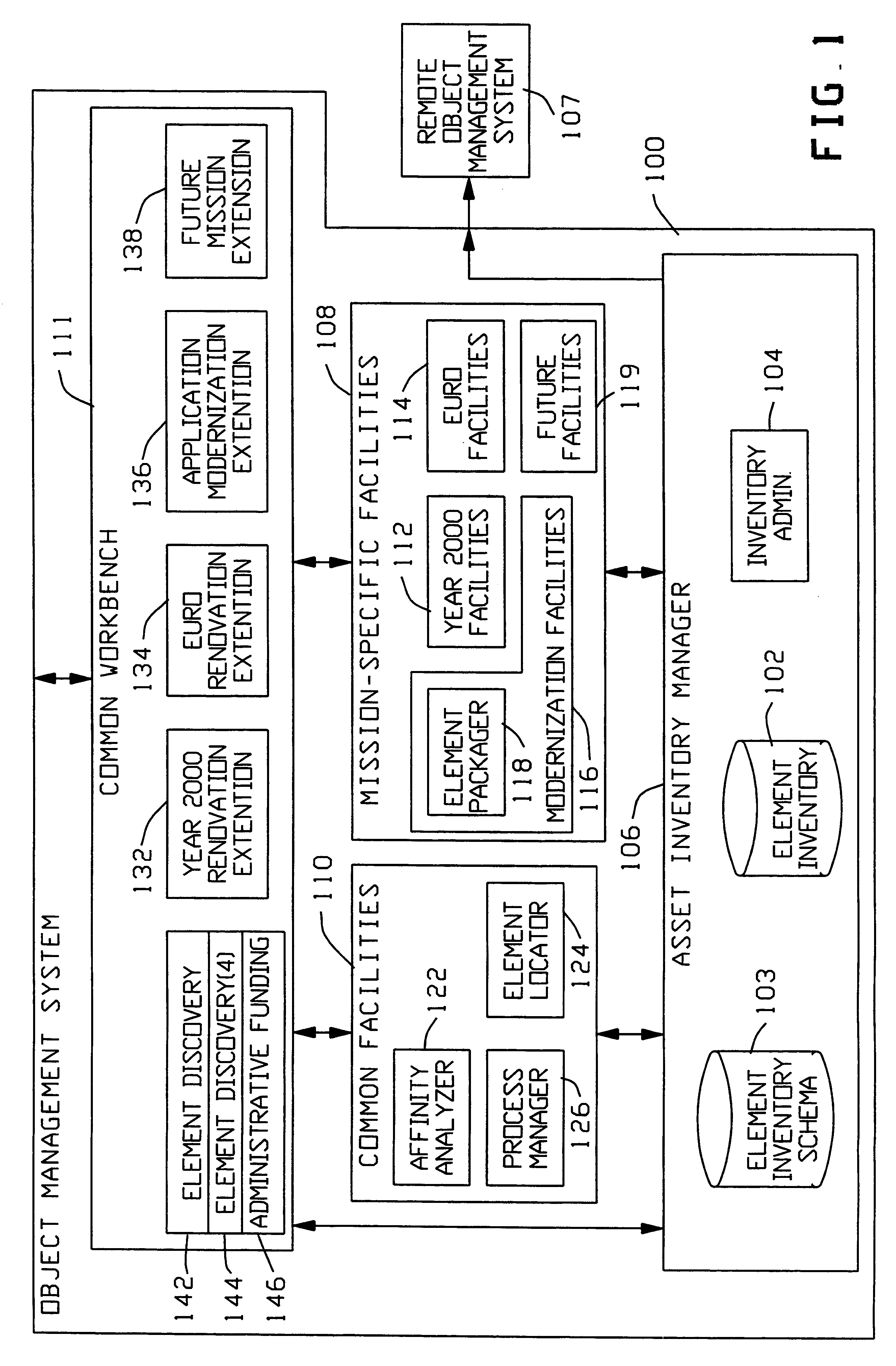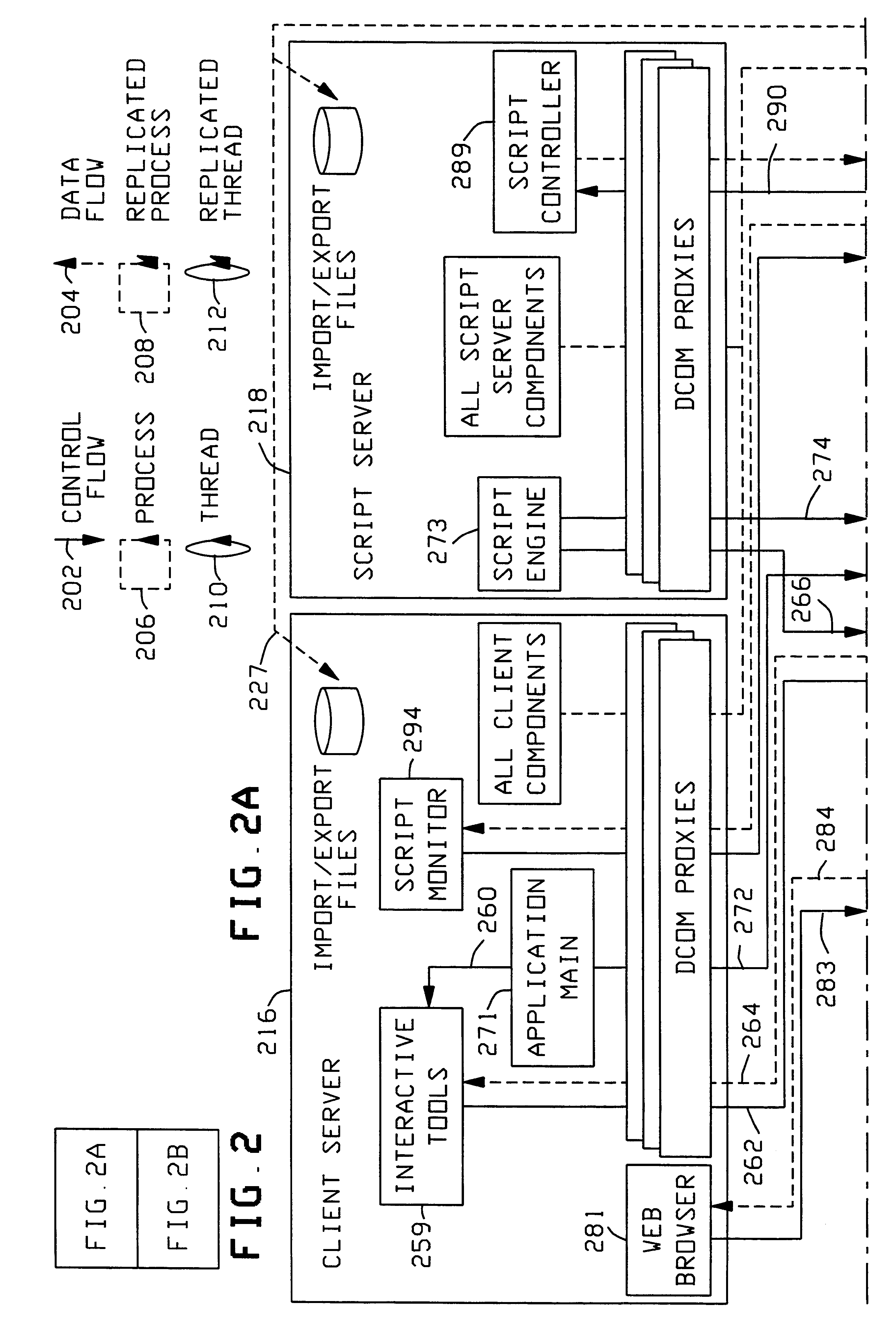Object management system supporting the use of application domain knowledge mapped to technology domain knowledge
a technology domain knowledge and object management technology, applied in the field of object management system for tracking, cataloging, and managing data and code components, can solve the problems of complicated process, more difficult development of automated component identification mechanisms,
- Summary
- Abstract
- Description
- Claims
- Application Information
AI Technical Summary
Benefits of technology
Problems solved by technology
Method used
Image
Examples
Embodiment Construction
of the Element Inventory Schema and Domain Mappings
FIG. 3 is a block diagram of the generalized model for the Element Inventory Schema (EIS). As discussed above, the preferred embodiment of the Object Management System 100 utilizes a model loaded within EIS 103 which includes the element type definitions as represented by Element Type 302. Each element type may represent a particular type of software construct or data structure for a code or data module existing within one of the host systems interconnected to Object Management System 100. Examples of element types include "table", "program", "database", "application", and "transaction management system". As many element types may be defined as is necessary to support a given mission of the data processing systems that are managed by Object Management System 100. Generally, a set of element types will be loaded when the Object Management System is initialized. The model is flexible, and may be updated during the life of the system u...
PUM
 Login to View More
Login to View More Abstract
Description
Claims
Application Information
 Login to View More
Login to View More - R&D
- Intellectual Property
- Life Sciences
- Materials
- Tech Scout
- Unparalleled Data Quality
- Higher Quality Content
- 60% Fewer Hallucinations
Browse by: Latest US Patents, China's latest patents, Technical Efficacy Thesaurus, Application Domain, Technology Topic, Popular Technical Reports.
© 2025 PatSnap. All rights reserved.Legal|Privacy policy|Modern Slavery Act Transparency Statement|Sitemap|About US| Contact US: help@patsnap.com



